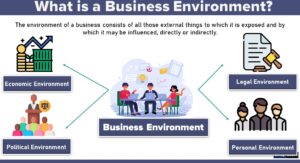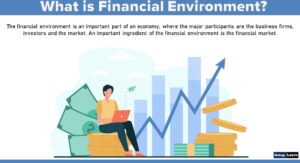Table of Contents
What is Economic System?
An economic system can be referred to as a system that encompasses the methods of production, distribution and exchange of goods and services (excluding their consumption). The different economic systems differ on the basis of means of establishment of ownership.
An economic system is an organized way wherein a country allocates resources and distributes items and services across the entire country or a given geographic vicinity. It consists of the aggregate of several establishments, entities, agencies, decision-making processes and styles of consumption that make up the economic structure of a particular community.
The aim of the economic system of a society is to determine what to produce, or a way to produce it, and for whom to distribute goods and services. The primary objective of an economic system is to provide human beings with a minimum standard of living or satisfactory life.
Types of Economic System
There are different types of economic systems used throughout the world. Broadly, they’re capitalist economic system, socialist economic system and mixed economic system. And each type of economic system has its very own strengths and weaknesses. we will discuss them in detail:
Capitalist Economy
The capitalist economy is an economic system in which private individuals or businesses own capital goods. The production of goods and services is based on supply and demand in the general market known as a market economy.
This type of economy involves no governmental interference. There are many developing as well as developed nations which follow the capitalist economy system such as Germany, the U.S., etc.
Features of Capitalist Economy
The features of a capitalist economy are as follows:
-
Private Ownership: The capitalist economy is based on property rights and on the principle that the government should leave economic production to the private sector.
-
Capital Accumulation: The capitalist economy is a competitive system whereby capital is accumulated by individuals who are successful in the market.
-
Capital Concentration: In a capitalist system, capital typically becomes concentrated such that a relatively small number of people, known as a capitalist class, own much of the property in a nation.
-
Competition: Capitalistic economy relies on intensive competition to allocate resources efficiently, improve things and lower prices.
-
Welfare Capitalistic Economy: A pure form of capitalistic economy, known as a laissez-faire capitalistic economy is a survival of the fittest system where the government plays no role in the economy.
-
Wage Labor: In a capitalist system, much of the capital is usually owned by a small capitalist class. Most people in a capitalist system offer their labour to the market to earn a living.
- Market Economy: The process of production, distribution and exchange under a capitalist economic system is governed by the market forces.
Socialism is an economic system where ownership and regulation are under the government. All the activities of production and other features like allocation of assets, consumption, distribution of income, investment pattern, and so on., are under the direction and control of the government. It is also referred to as the socialist or command economy.
In comparison to capitalism, socialism ensures public welfare and equality among people.
Features of Socialist Economy
The features socialist economy are as follows:
-
Collective Ownership: In a Socialistic economy, all means of production are owned by the community, i.e., the Government and no individual can hold private property beyond a certain limit. Therefore, it is a government which utilizes these resources in the interest of social welfare.
-
Economic, Social and Political Equality: under a Socialistic economic system, there’s almost equality between wealthy and poor. There is no problem with class struggle.
-
Economic Planning: Under a Socialistic economy, the government fixes certain objectives. In order to achieve these objectives, the government adopts economic planning.
-
Provision of Basic Needs: In a socialist economy, the basic needs of food, shelter, clothing, education, health and employment are provided by the government without any discrimination.
-
No Competition: Typically, when anybody wants to buy a car, there is limited choice. There are no different brands and different models with varying features and prices. In a socialistic economy, there is no competition in the market since the state is the sole entrepreneur.
- Price Control: One might be wondering how prices are regulated in an economy without any market competition. In socialistic economies, the prices of products are controlled and regulated by the state.
Mixed Economy
A mixed economy combines the characteristics of both capitalism and socialism. it is a mixture of both public and private possession. A mixed economy gives private enterprises the liberty to function and develop but also allows government interference in subjects for preserving economic objectives.
The combination of government interference and the private sector varies from one nation to another. India is a mixed economy and comprises all the relevant characteristics of capitalism and socialism for the regulation and control of the economy
The decisions pertaining to economic planning and resource allocation are undertaken by the Central Government. The economy’s overall growth and development depend upon the achievement of its goals through collaborative efforts of both private and public firms.
Features of Mixed Economy
The main features of a mixed economy are as follows:
-
Co-existence of the Private and Public Sectors: Co-existence of the private and public sectors is the outstanding feature of a mixed economy. certain industries might be in the public area and certain industries within the private sector.
-
Existence of Joint Sector: A mixed economy also has a joint sector which is run jointly by the state and private enterprises.
-
Regulation of Private Sector: Under a mixed economy, Government exercises strict control and regulation over private sector industries. Even though everyone is free to start a company or an industry as he desired as long as he/she follows rules and regulations.
-
Private Property: Under a mixed economy, private firms and individuals have the right to own and use the property. But some restrictions have been imposed on private individuals so as restrict or prevent the concentration of wealth in the hands of a few.
- Social Welfare: The principal aim of a mixed economy is to maximize social welfare. This feature incorporates the merits of a Socialistic economy and avoids the demerits of a capitalistic economy.
The main differences between a Capitalist, Socialist, or Mixed Economy are as follows:
| On the Basis of | Capitalist Economy | Socialist Economy | Mixed Economy |
| Meaning | The capitalist economy is an economic system in which private individuals or businesses own capital goods. | A Socialist economy is a populist economic and political system based on public ownership of the means of production. | A mixed economy combines the characteristics of both capitalism and socialism. it is a mixture of both public and private possession. |
| Definition | “Capitalism is a particular mode of organisation of production which is characterised by wage slavery, production of profit, and creation of surplus value”. | “In socialism the role of the state is central. It owns the means of production and directs economic activity.” | “Mixed economy is that economy in which both public and private institutions exercise economic control.” |
| Nature | There is private ownership | Collective Ownership there is no private ownership | Co-existence of the private and public sectors is the outstanding nature of a mixed economy. |
| Advantage | (1) The capitalist system can make changes consistent with the desires and circumstances of the economy. It has in-built flexibility. (2) There is no interference in economic matters. Every individual is free to take decisions as to his economic activities keeping in mind his own interest. |
(1) Economic stability is maintained by the government on the basis of economic planning. There are no cyclical fluctuations in such a system. (2) The aim of a socialist economy is to maximize the social welfare of the society. |
(1) There might be competition among public and private industries, which allows you to bring about extra efficiency and production in a mixed economy. (2) In a mixed economy, economic activities are carried out as per the plan of the Government. |
| Disadvantage | (1) In a capitalist economic system, wealth enjoys prestige in society, which results in the erosion of human values. (2) There is a large-scale wastage of sources because of needless competition. |
(1) A consumer has no choice of his own, he acts as a mere slave under this system. Government produces goods and services keeping in view the needs of the people. (2) Government rules the country according to its own interest. No automatic function in the system exists at all. |
(1) There is no freedom for the private sector in a mixed economy. (2) There may be always a threat of nationalization in the mixed economic system due to which the private sector does not work actively. |
FAQ
What is Economic System?
An economic system can be referred to as a system that encompasses the methods of production, distribution and exchange of goods and services (excluding their consumption).
What is Capitalist Economy?
The capitalist economy is an economic system in which private individuals or businesses own capital goods. The production of goods and services is based on supply and demand in the general market known as a market economy.
What is a Mixed Economy?
A mixed economy combines the characteristics of both capitalism and socialism. it is a mixture of both public and private possession.
What are the Features of Mixed Economy?
The main features of a mixed economy are as follows:
1. Co-existence of the private and public sectors
2. Existence of Joint Sector
3. Private Property
4. Social Welfare
5. Regulation of the Private Sector





